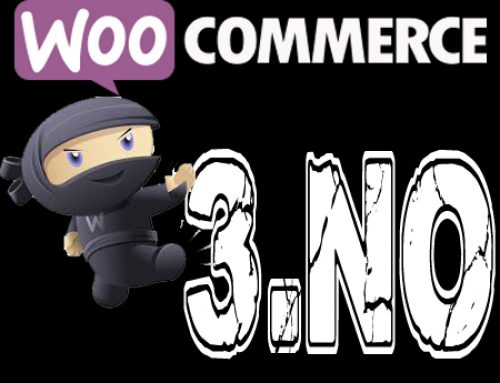Back in 2005, Business Week was writing a story about design as a commodity. Since then, the barrier to entry to becoming a design professional has continued to drop, compounding the problem with an even greater over-supply of designers.
Ann Handley, author of the book Content Rules, attributes this to your left-brained technical skills, and also the commoditization of creativity through the proliferation of design templates, do-it-yourself site builder applications, and free WordPress themes.
My personal feeling is that the design industry is losing respect. I believe that with our increased numbers we are naturally less valued, but we’re not exactly helping ourselves with our conduct, either. Every time a professional designer is willing to participate in spec work (basically working for free, in the hope that they might “win” by getting paid), for example, or charge $100 to design a logo, or even abandon a project midway through, we are downgrading our market’s perception of the value we provide.
We had an experience recently which illustrated how little value people place on the design process, when a client of ours, Paradigm Real Estate Solutions, believed they could choose not to pay a portion of the invoice which was for content writing, because they had to provide what they perceived to be too much information. Of course, our legal system doesn’t work this way, and the courts actively work to enforce legally binding contracts, treating breach of contract as a serious matter. And there is a very good reason for this — if people and organizations can’t trust that their rights in a legal contract will be protected by the courts, they may be tempted to resort to their own, possibly less savory methods of enforcing their contracts. But the point is that our client believed non-payment to be an option they could freely choose. Would they treat their accountant the same way if they were asked to provide information regarding a particular transaction in their ledger?
Cases like this one with Paradigm Real Estate Solutions seem to indicate a belief that a lower standard of ethical conduct is acceptable when working with designers, and I feel that we, as an industry, must have done something to perpetuate this belief, no?
You may have noticed over recent years, like we have, an increased need to spend more time educating our clients about the design process, the value of design, and why a logo costs more than $100 – or a website, too, for that matter. The time we spend in these activities actually increases the cost of design, but this is generally not something we bill for, so it’s a cost that we absorb, making our time less profitable, and making it more difficult to stay in the business. The consequence of this is that professional designers who provide a valuable service to our market – professional designers who show the world what good design is – professional designers who inspire companies to hire the members of our industry – are disappearing. They are getting out of the rat race, thereby reducing the sum talent in our industry. They are using their enormous capacity for creative thinking and applying it elsewhere.
I agree with Ann Handley that the ease to which our potential clients can circumnavigate the inconvenience of working with a designer who doesn’t return emails, simply by downloading a free website template, certainly makes hiring a designer look like an unnecessary expense. But can we not, as professional problem solvers and creative thinkers, think of a way to differentiate ourselves from a Download Now button?
Most of us recognize the things we can do to elevate the perceptions of our industry — conducting ourselves with professionalism, designing within a strategic framework for our clients, avoiding spec work, following industry standards regarding contracts, billing, and process — and educating younger designers about the importance of these practices. And it will always be necessary for us, as an industry, to uphold high standards of conduct and quality. But the prevalence of clients who feel that they can choose to pay or not pay according to the value they perceive, often a subjective judgement, is a problem we all face together as an industry.
So, What Can We Do?
The reason I’m writing this is because I feel strongly that if we are to have any hope of improving conditions for our industry, we need more universal adherence to industry standards by our practitioners. To do this, we need to ensure that all designers, especially younger designers just entering the work force are educated about the importance of adhering to professional standards of conduct, pricing according to fair market rates, avoiding spec work, following a structured process, and communicating this process to our clients so they can gain an understanding of the level of attention we apply to helping their business.
There are several resources available to us. The first place I would recommend is the AIGA website at www.aigDesigners:
How You Can Avoid Becoming A Commoditya.org, where you can read up on industry standards and practices, compensation, ethics and specific issues such as why spec work is damaging to our industry and our clients.
Next, here are a few books that I highly recommend for every designer working for themselves:
Talent is Not Enough: Business Secrets For Designers, by Shel Perkins
The Creative Business Guide to Running a Graphic Design Business, by Cameron S. Foote
AIGA Professional Practices in Graphic Design, by Tad Crawford
Graphic Artists Guild Handbook of Pricing and Ethical Guidelines, by The Graphic Artists Guild
Also, I highly recommend a subscription to Creative Business Magazine. Editor-in-Chief Cameron Foote has been providing the design community with business advice for decades and if there’s an issue he hasn’t already covered, subscribers can email him directly to get sound and accurate answers and advice.
Our industry needs to become more-widely informed about our legal rights regarding business contract law, business practices, and the legal recourse available to us when clients try to take advantage of us by leaning on us with their size.
Similarly, if all designers followed the same business practices, client organizations would find it difficult to threaten to go elsewhere if we won’t “play ball”.
Next Steps
I urge everyone reading this to share it with every designer you know, and encourage them to do the same – share this link, or place the contents of this article on your website (please keep the links intact). I also urge our industry leaders to write further on this topic and help spread the movement. Additionally, I urge all designers to call out those companies who engage in unethical business practices such as those described above, and lastly, I urge all designers to speak loudly of companies that have created great value through the ethical engagement of designers so that our industry can turn the tide away from our services becoming a commodity.
And Finally …
Shame on you, Paradigm Real Estate Solutions! Low ethical standards of business conduct do not lead to long-term success. The design industry is a strong and thriving community of professionals committed to helping our clients’ businesses succeed through the practice of good design and strategy. I would recommend to any designer who comes across Paradigm Real Estate Solutions to bill for everything in advance, and you should probably add a hefty extra margin to your pricing.





